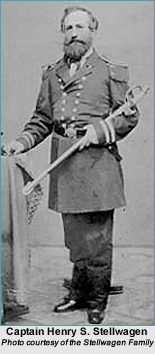Stellwagen Bank National Marine Sanctuary
 Nominated by the Provincetown Center for Coastal Studies in 1982 for sanctuary status, the Gerry E. Studds-Stellwagen Bank National Marine Sanctuary became one of only thirteen such sanctuaries in the country in 1992. The review process to become a federally protected Marine Sanctuary took ten long and arduous years to complete.
Nominated by the Provincetown Center for Coastal Studies in 1982 for sanctuary status, the Gerry E. Studds-Stellwagen Bank National Marine Sanctuary became one of only thirteen such sanctuaries in the country in 1992. The review process to become a federally protected Marine Sanctuary took ten long and arduous years to complete.
The sanctuary encompasses approximately 842 square miles along the eastern edge of Massachusetts Bay, six miles north of Provincetown, 26 miles east of Boston, and seven miles southeast of Cape Ann (see map). On a regional scale, the sanctuary is a part of the Gulf of Maine ecosystem, which supports a wealth of marine life and is an important feeding ground for endangered marine mammals such as the North Atlantic right whale, humpback whale and the finback whale.
SBNMS is a focal point of much of the Center’s research, education, and advocacy. The central feature of the sanctuary, Stellwagen Bank, is an underwater plateau of sand and gravel. It was created by the same glacial processes that formed Nantucket, Martha’s Vineyard and Cape Cod at the end of the last great ice age during the Pleistocene epoch. The bank’s broad, sandy bottom is scattered with ridges and troughs. In deeper waters adjacent to the bank, glaciers left boulder fields and cut steep canyons and gorges into the ocean floor.
These varying topographical features create a diverse array of habitat, which contributes to Stellwagen’s extraordinarily rich biodiversity (see Stellwagen Geology). As waters in deeper Stellwagen basin and the Gulf of Maine encounter the bank’s rising elevation, upwelling currents occur. This process mixes nutrient-rich bottom water with sunlight-infused surface water. Important nutrients are broken down when sea plants and animals die and sink to the bottom. These nutrients act as fertilizer for ocean plants. The combination of sunlight, nutrients and carbon dioxide create an environment in which phytoplankton, (tiny “plants” such as algae) thrive. Like terrestrial plants, phytoplankton convert sunlight to energy in a process called photosynthesis. Tiny animals called zooplankton feed on the phytoplankton blooms. At the base of the food web, plankton begins the chain of productivity supporting the incredibly rich marine life typical of the Gulf of Maine. As a result, the bank has been a popular fishing ground for centuries and is home base to a wide array of fin fish.
Beginning in the mid-20th century, it became evident that these dynamic processes could not replenish the resources increasingly depleted by a centuries-long fishing bonanza. Nevertheless, fishing fleets from numerous ports continue to fish under stringent regulations for many commercially important groundfish such as Atlantic cod, silver hake, and yellowtail flounder as well as economically important shellfish species, including American lobster, sea scallops, squid, and ocean quahogs. In addition, recreational fishermen seek out bluefin tuna and striped bass. Charter fishing and whale watching vessels provide easy access for exploring sanctuary waters.
It has been estimated that close to one million people a year visit the sanctuary to watch whales and it is listed as one of the top ten whale watching sites in the world by the World Wildlife Fund. Stellwagen also hosts an incredible diversity of sea birds throughout the year. Migratory species visit the area during their travels, including gannets, shearwaters, storm petrels, fulmars, phalaropes, and penguin-like alcids, such as puffins and razorbills. Other birds seen often in the sanctuary include gulls and terns as well as marine ducks and geese and the occasional warbler en rout to the U.S. mainland from South America.
The designation of Stellwagen Bank as a national marine sanctuary was made to promote comprehensive, long-term management of its resources. The bank’s complex and dynamic natural systems perfectly illustrate the argument for an ocean policy that encourages ecosystem-based management, in which all the components of a given marine system are considered when creating and implementing usage rules and regulations.
Representatives from the fishing industry, from government agencies that manage American fisheries, marine mammal researchers, whale watch industry operators, and other resource management experts and advisors are some of the key members of the policy-making arm of the Sanctuary, the Sanctuary Advisory Council. The Sanctuary’s administration together with the Council is working to formulate an updated management plan that will illuminate and help resolve 21st century resource management issues within the Sanctuary.


